There’s something undeniably charming about a teacup planter. Whether you’re a gardening enthusiast or simply someone who loves unique home decor, transforming a delicate teacup into a thriving mini garden is a trend that’s here to stay. Not only does it bring a touch of whimsy to your space, but it’s also an eco-friendly way to repurpose items you might already have lying around. In this comprehensive guide, we’ll explore everything you need to know about teacup planters—from choosing the right teacup to planting tips and creative styling ideas. Let’s dive into the world of teacup planters and discover why they’re the perfect blend of sustainability and style.
Why Choose a Teacup Planter?

Teacup planters have surged in popularity for a variety of reasons. They’re small, versatile, and add a vintage flair that larger planters often can’t replicate. But what makes them truly special? Let’s break it down.
The Charm of Repurposing
One of the biggest draws of a teacup planter is its sustainability factor. Instead of tossing out chipped or mismatched teacups, you can give them a new lease on life. This small act of repurposing reduces waste and adds a personal touch to your decor. Plus, it’s a budget-friendly alternative to buying new planters.
Perfect for Small Spaces
If you live in an apartment or have limited outdoor space, a teacup planter is an ideal solution. These tiny vessels are perfect for growing succulents, herbs, or small flowers, making them a great fit for windowsills, desks, or even as part of a centerpiece.
A Touch of Nostalgia
There’s something inherently nostalgic about teacups. Maybe they remind you of your grandmother’s tea parties or a cozy afternoon with a good book. Turning them into teacup planters keeps that sentimental value alive while giving them a modern twist.
How to Choose the Perfect Teacup for Your Planter
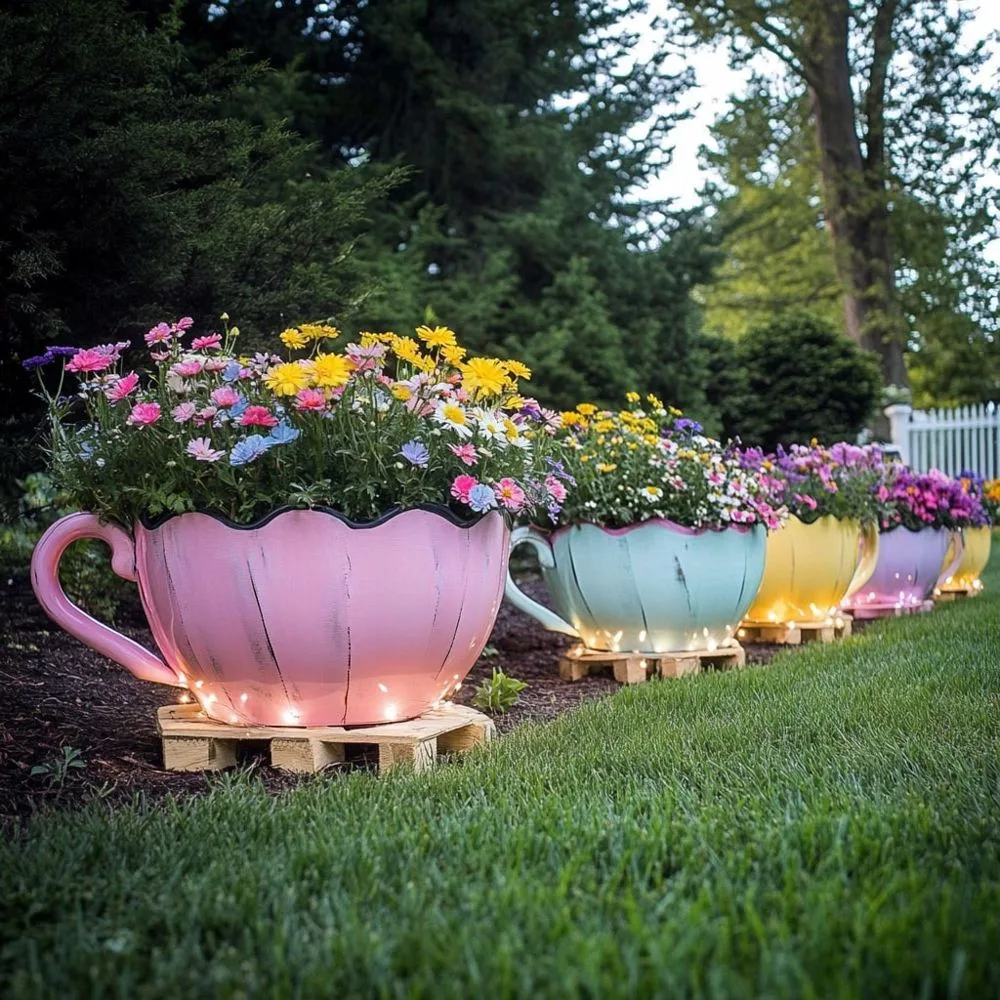
Not all teacups are created equal when it comes to planting. To ensure your teacup planter thrives, here are some key factors to consider.
Size Matters
The size of your teacup will dictate what you can plant. A standard teacup (about 6-8 ounces) works well for small succulents or cacti, while a slightly larger one might accommodate herbs like basil or mint. Make sure the teacup is deep enough to hold a small root system.
Material Considerations
Most teacups are made of porcelain or ceramic, which are excellent choices for planters. These materials retain moisture well and are sturdy enough to support soil and plants. Avoid metal teacups unless they’re lined, as they can rust over time.
Drainage is Key
Plants need proper drainage to avoid root rot, but teacups don’t naturally come with holes. If you’re handy with a drill, you can add a small drainage hole to the bottom. Alternatively, layer pebbles or activated charcoal at the base to help excess water settle away from the roots.
Aesthetic Appeal
The beauty of a teacup planter lies in its design. Look for teacups with floral patterns, pastel colors, or vintage motifs to enhance the overall look. Mismatched sets can also create an eclectic, bohemian vibe.
Step-by-Step Guide to Creating a Teacup Planter
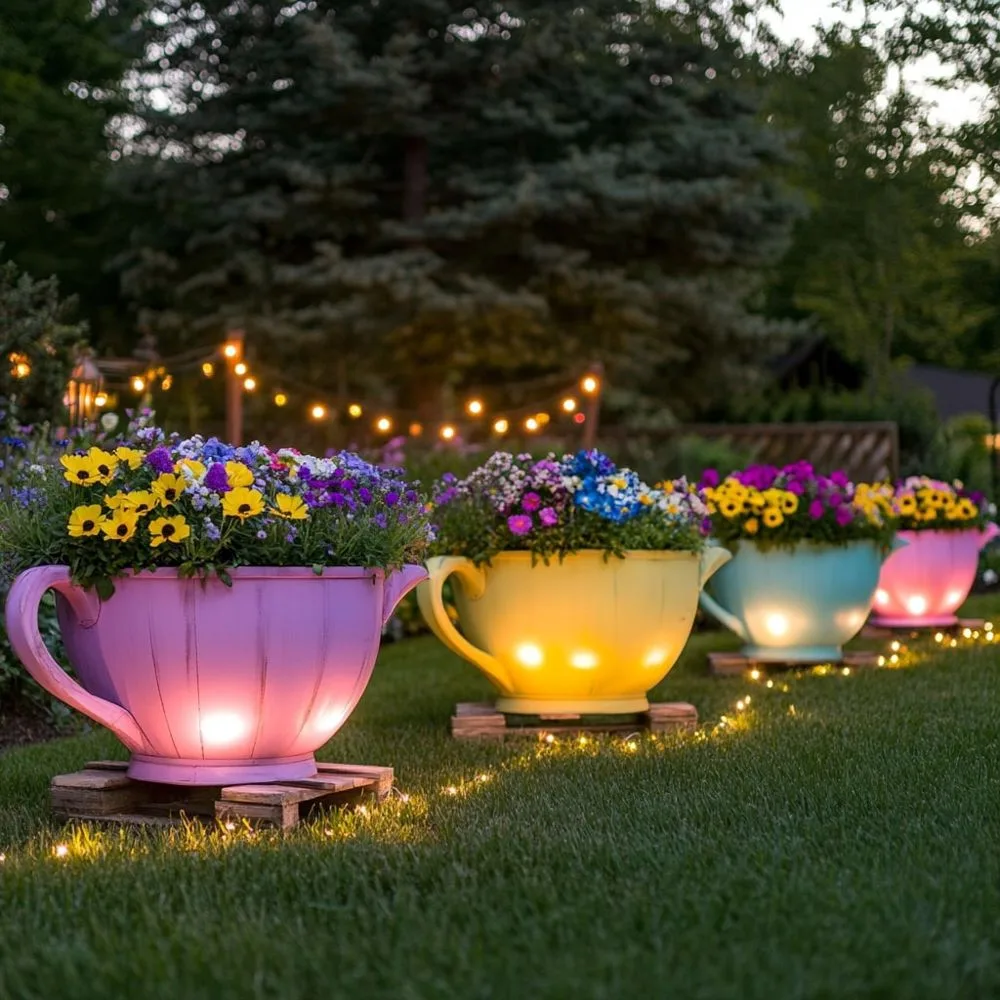
Ready to get started? Here’s a simple, beginner-friendly process to craft your own teacup planter.
Step 1: Gather Your Supplies
You’ll need:
- A teacup (with or without a saucer)
- Small pebbles or activated charcoal (for drainage)
- Potting soil (specific to your plant type)
- A small plant (succulents, cacti, or herbs work best)
- A spoon or small trowel
- Optional: Decorative moss or tiny figurines
Step 2: Prepare the Teacup
If you’re adding a drainage hole, carefully drill it into the bottom of the teacup using a ceramic drill bit. If not, add a 1-inch layer of pebbles or charcoal to the base. This ensures water doesn’t pool around the roots.
Buy the similar products: Right Here!
Step 3: Add Soil
Fill the teacup about two-thirds full with potting soil. For succulents, use a cactus mix that drains quickly. For herbs, a standard potting mix will do. Press the soil down lightly to remove air pockets.
Step 4: Plant Your Greenery
Gently remove your plant from its nursery pot and place it in the teacup. Add more soil around the roots, leaving a small gap at the top for watering. Pat the soil down to secure the plant.
Step 5: Add Finishing Touches
Top the soil with decorative moss, small pebbles, or even a tiny fairy garden figurine for extra charm. Place the teacup on its saucer to catch any drips, and you’re done!
Best Plants for a Teacup Planter
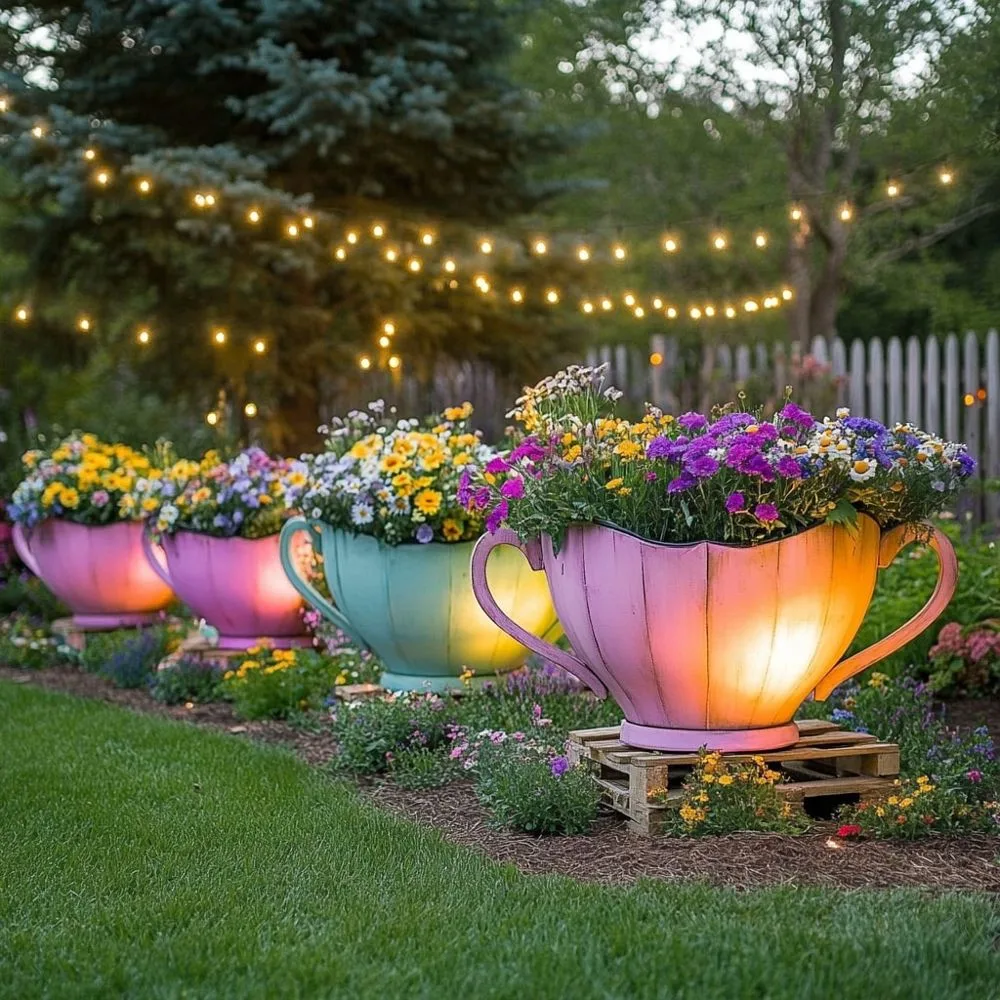
Not sure what to grow in your teacup planter? Here are some top picks that thrive in small spaces.
Succulents
Succulents like echeveria, haworthia, or jade plants are perfect for teacup planters. They require minimal water and can handle the limited root space.
Cacti
Mini cacti add a quirky, desert-inspired vibe to your teacup planter. Just be sure to use a well-draining soil mix and avoid overwatering.
Herbs
Small herbs like thyme, oregano, or microgreens can flourish in a teacup planter, especially if placed in a sunny kitchen window.
Air Plants
For a low-maintenance option, try an air plant. These don’t need soil—just pop them into the teacup and mist them occasionally.
Creative Ideas to Style Your Teacup Planter
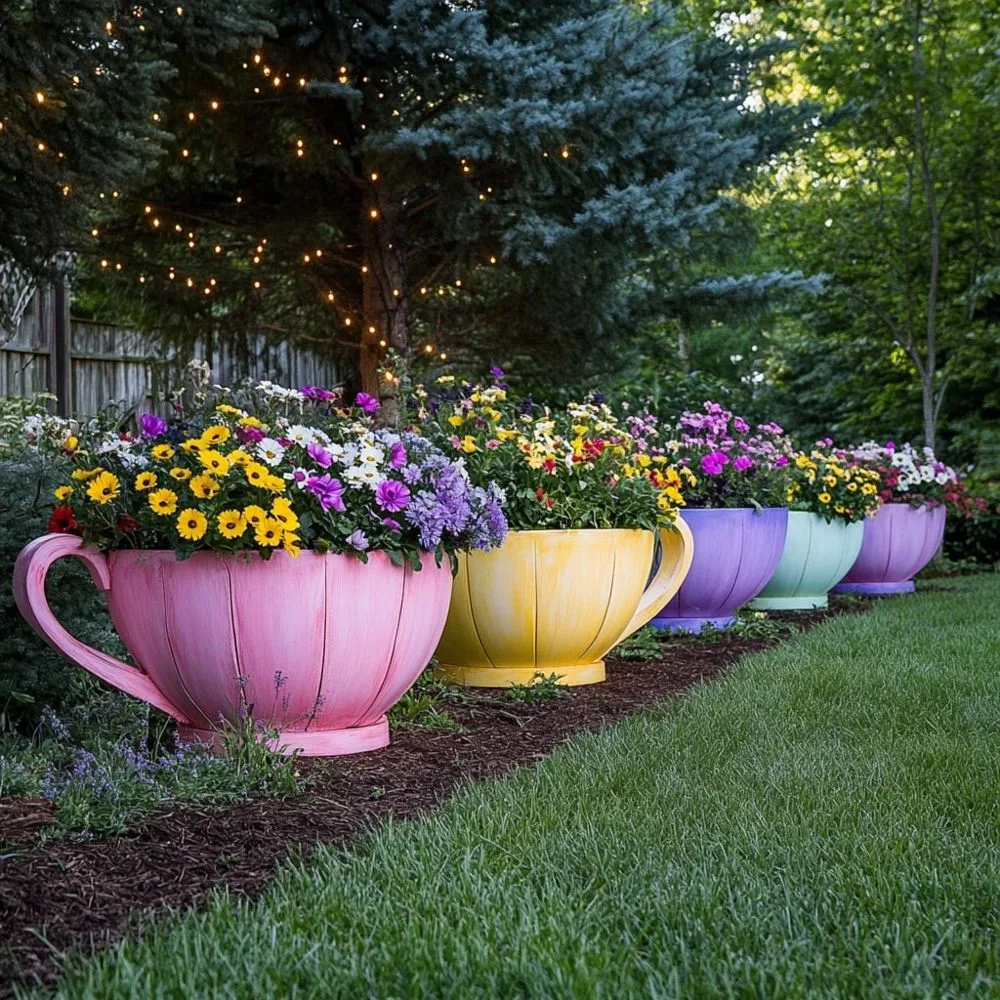
A teacup planter isn’t just a plant holder; it’s a statement piece. Here are some creative ways to display it.
Vintage Teacup Planter Collection
Gather a few mismatched teacups and create a mini garden display on a tray or shelf. The variety of patterns and colors will make it a focal point in any room.
Teacup Planter Centerpiece
Fill several teacup planters with succulents or flowers and arrange them as a table centerpiece. Add candles or fairy lights for a cozy, elegant touch.
Hanging Teacup Planters
Attach wire or macramé to your teacup and hang it near a window. This works especially well with trailing plants like string of pearls.
Gift Idea: Personalized Teacup Planters
A teacup planter makes a thoughtful, handmade gift. Pair it with a handwritten note or a tea-themed gift basket for a personal touch.
Caring for Your Teacup Planter
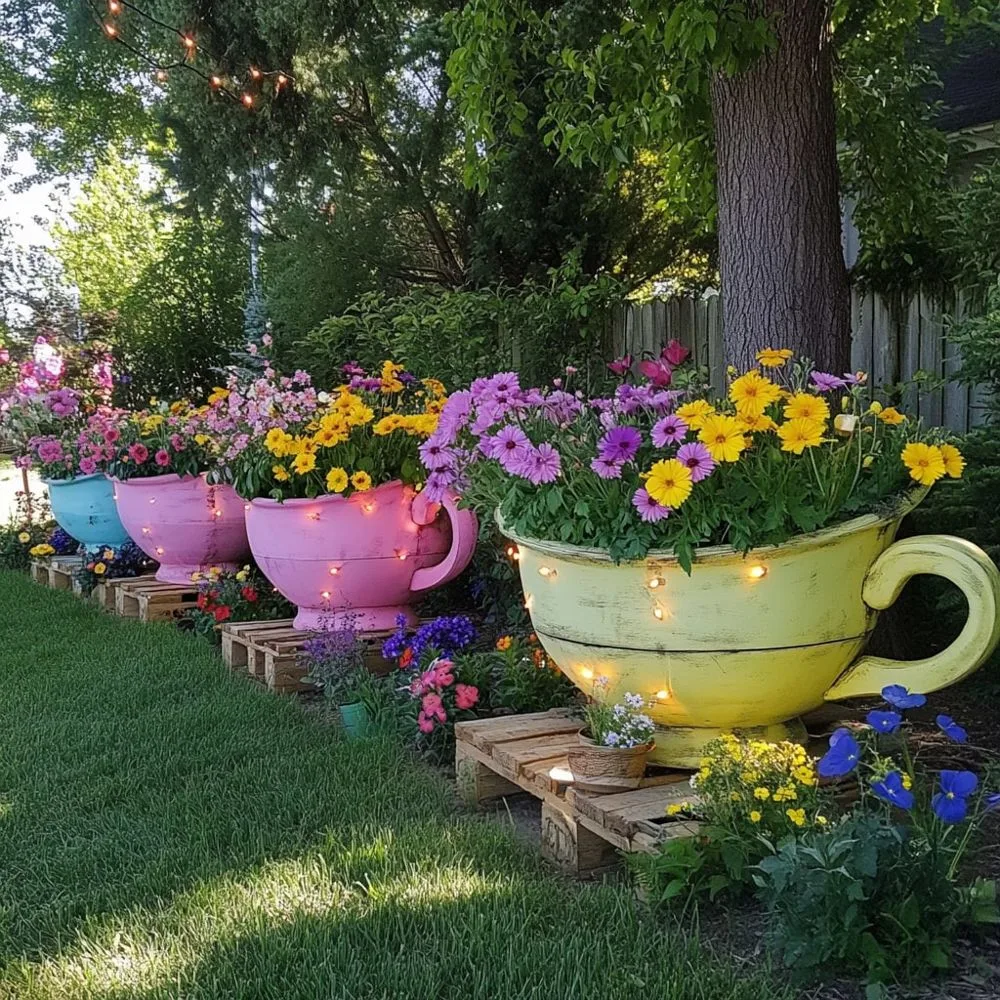
To keep your teacup planter thriving, follow these simple care tips.
Watering Wisely
Overwatering is the biggest threat to a teacup planter. Use a small watering can or dropper to add just enough water to moisten the soil. For succulents, water sparingly—once every 1-2 weeks is usually enough.
Sunlight Needs
Place your teacup planter in a spot with bright, indirect light. Succulents and cacti can handle some direct sun, while herbs prefer a gentler glow.
Maintenance
Trim dead leaves and check for pests regularly. If the plant outgrows the teacup, transplant it to a larger pot and start fresh with a new cutting.
The Benefits of Teacup Planters Beyond Aesthetics
While teacup planters are undeniably pretty, they offer more than just good looks.
Eco-Friendly Living
By repurposing old teacups, you’re reducing waste and embracing a more sustainable lifestyle. It’s a small step that makes a big difference.
Stress Relief
Gardening, even on a tiny scale, is known to reduce stress and boost mood. Caring for a teacup planter can be a calming daily ritual.
Conversation Starter
Guests will love the quirky charm of your teacup planter. It’s a unique decor piece that sparks curiosity and compliments.
Buy the similar products: Right Here!
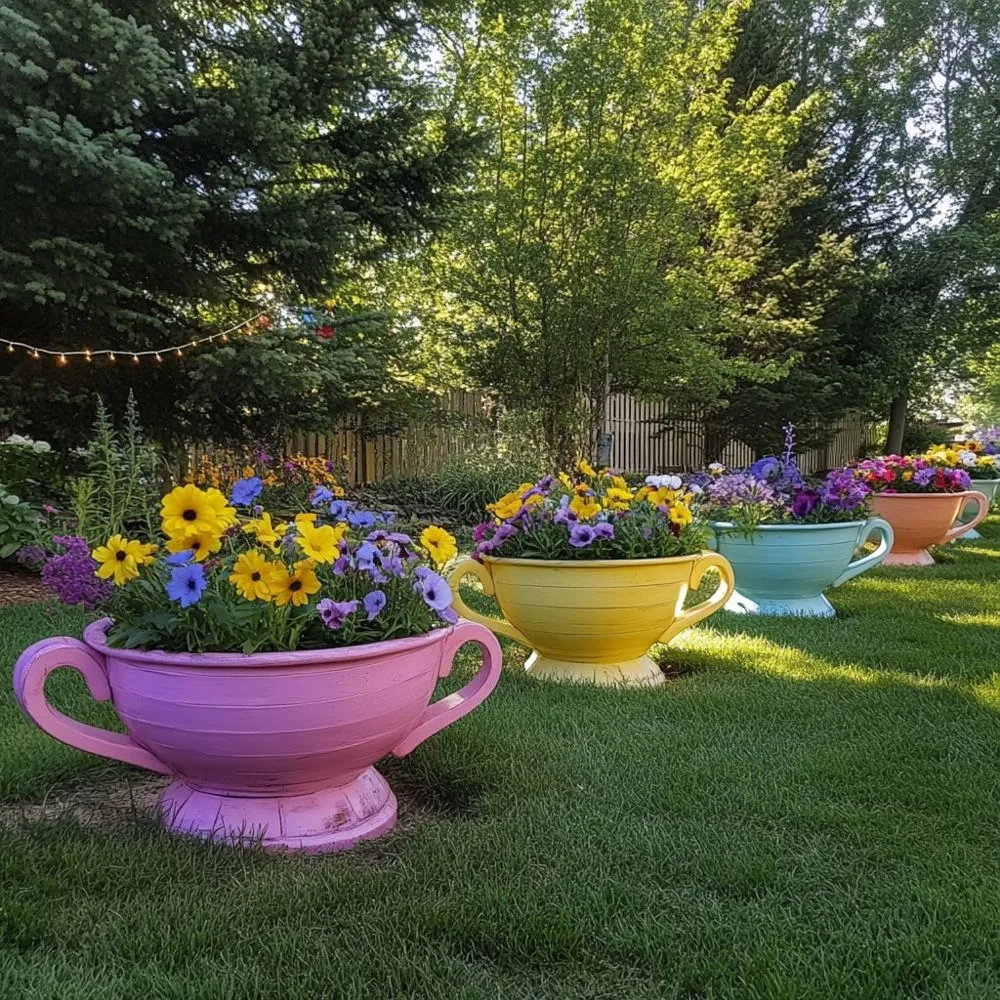
Where to Find Teacups for Your Planter Project
Don’t have any teacups on hand? Here’s where to look.
Thrift Stores
Thrift shops are treasure troves for vintage teacups at bargain prices. You might even find a rare gem with a unique design.
Family Heirlooms
Ask relatives if they have old teacups they’re willing to part with. It’s a great way to add sentimental value to your planter.
Online Marketplaces
Sites like Etsy or eBay offer endless options for teacups, from antique sets to modern designs.
Why Teacup Planters Are a Must-Try Trend
Teacup planters are more than just a passing fad—they’re a delightful blend of creativity, sustainability, and practicality. Whether you’re a seasoned gardener or a beginner looking for a fun DIY project, crafting a teacup planter is an easy way to bring life and personality to your space. From choosing the perfect teacup to styling it with your favorite plants, the possibilities are endless. So, grab a teacup, a handful of soil, and a tiny plant, and let your imagination run wild. Your home—and the planet—will thank you for it.
Start your teacup planter journey today and watch how these small, charming creations transform your surroundings, one sip-sized garden at a time.

